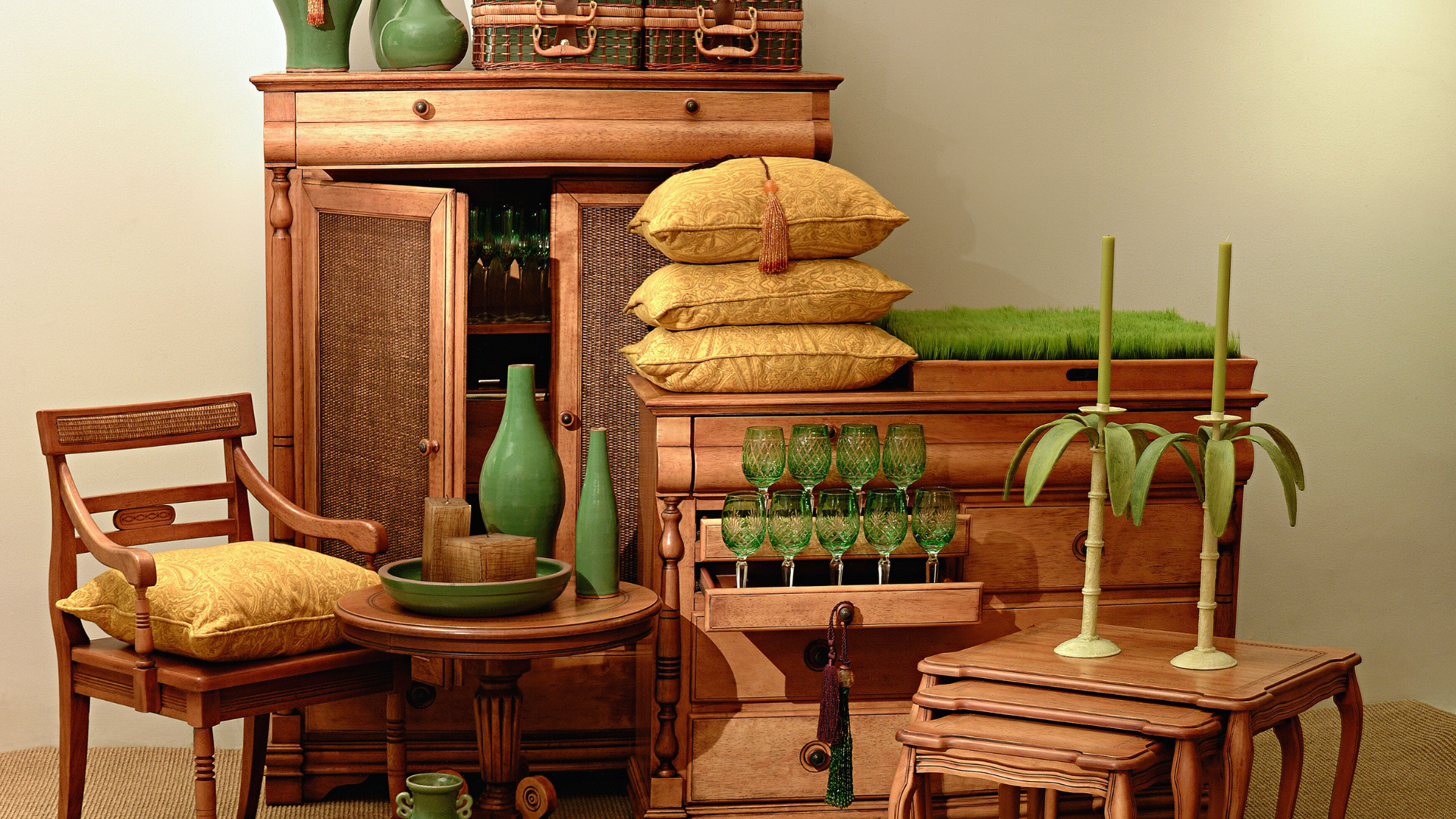Old furniture often holds stories and memories, but it can also become an eyesore if left unused. Repurposing old furniture not only breathes new life into it but also showcases creativity and resourcefulness in home décor. With a few simple DIY projects, anyone can transform a dated piece into a functional and stylish item that enhances any space.
From turning an obsolete dresser into a chic bench to transforming old doors into unique shelves, the options are endless. These upcycling ideas not only minimize waste but also offer the satisfaction of creating something unique. Embracing this approach allows individuals to express their style while being kind to the environment.
Engaging in furniture repurposing encourages a hands-on experience that can be both fun and rewarding. It invites people to think creatively about the potential of their furniture pieces, inspiring them to explore the possibilities in their own homes.
Assessing and Preparing Your Furniture for Repurposing
Before embarking on repurposing old furniture, it is essential to evaluate its condition and prepare it adequately. Taking the time to assess and clean the pieces can significantly enhance the final result of any revamping project.
Evaluating the Condition of Used Furniture
Inspecting the used furniture is the first step. Look for structural integrity, checking for cracks, loose joints, or missing parts. Identifying these issues early helps determine whether a piece is worth revamping.
Pay close attention to the condition of the wood. Check for signs of rot or pest damage, especially termite activity, which is quite common in older wooden furniture. Termite damage may appear as tiny holes, hollow-sounding wood, or even fine wood dust. If there’s any doubt about a possible infestation, it’s a good idea to explore termite treatment options or consult a professional who specializes in both inspections and solutions.
In addition to checking the wood, inspect the fabric and surface condition. Look for stains, tears, or unpleasant odors that may be difficult to remove. Upholstered pieces may require deep cleaning or even reupholstering, so factor that into the decision-making process.
Lastly, don’t overlook the functionality of smaller components; test knobs, hinges, and drawer slides to ensure they work smoothly. Replacing hardware might be simple, but if the core mechanisms are damaged, repairs could be more involved. A thorough inspection from top to bottom helps avoid surprises later and ensures that any used furniture brought into the home is safe, clean, and worth the effort.
Cleaning and Basic Repair
Cleaning old furniture is crucial before any repurposing efforts. Begin by removing dust, dirt, and grime using appropriate cleaners for the material. For wood, a mix of water and mild soap works well, while upholstery may require specialized cleaners.
Basic repairs such as gluing loose joints or tightening screws can prevent further damage. Filling in scratches or dents can help restore the piece’s original appearance.
For upholstery, use upholstery cleaner and consider reupholstering if the fabric is beyond cleaning.
Creating a clean, stable foundation sets the stage for a successful repurposing project, allowing creativity to flourish in transforming old items into functional decor.
Creative Repurposing Ideas
Repurposing old furniture can create unique and functional pieces for any home. These innovative projects maximize resourcefulness while adding personality to living spaces.
Transforming Dressers into Unique Pieces
Old dressers can see a second life with a little creativity. They can be transformed into stylish kitchen islands by removing the drawers, adding a countertop, and integrating shelves for storage.
For a more playful approach, one can repaint dressers with bold colors or patterns. Using techniques like decoupage can incorporate personal touches with wallpaper or fabric.
Consider converting a dresser into a bathroom vanity by replacing the top with a sink and applying a waterproof finish. This technique combines aesthetic appeal with practical utility.
Reviving Bedside Tables with a Modern Twist
Bedside tables can be easily updated for a fresh look. One method involves painting them in light, neutral shades to create a modern feel, or using wood stains for a rustic touch.
Adding new hardware can change the look entirely. Unique knobs or handles bring personality and function, enhancing the table’s practicality.
Another idea is to stack two smaller bedside tables or incorporate shelves above them. This can create more space while adding height to the room’s design.
Upcycling Chairs into Functional Art
Wood chairs can be upcycled into more than just seating. Converting them into plant stands introduces a fresh green element to a room.
Removing the seat and inserting a decorative planter allows the chair to serve a new purpose. This method works well for outdoor spaces, infusing them with artistic flair.
Another approach involves turning a wooden chair into a unique side table. By reinforcing the structure and attaching a round top, it becomes a functional yet artistic addition to any seating area.
Innovative Shelving Solutions from Old Wood
Old wood from furniture can be repurposed into shelving units with character. For a rustic vibe, planks from discarded dressers or tables can be used as shelves mounted on brackets.
Creating a floating shelf effect could involve sanding down the wood, staining it to enhance grain, and securing it directly to the wall. This option presents a stylish display area for books and decorative items.
Using plywood, one can also craft geometric shapes or open shelving units. This modern design not only maximizes space but also showcases creativity and craftsmanship.
Finishing Touches for a Polished Look
Achieving a polished look in repurposed furniture often involves thoughtful detailing. Two effective approaches include applying decoupage for unique personalization and selecting the right paint and stain to enhance the furniture’s aesthetic.
Applying Decoupage for Personal Flair
Decoupage involves decorating surfaces with cut-out images and a glue finish. This technique allows individuals to express their creativity on their furniture.
To begin, gather materials such as patterned paper, fabric, or magazine cut-outs.
Steps to Apply Decoupage:
- Clean the furniture surface thoroughly.
- Cut images to fit desired areas.
- Use a decoupage medium to adhere the images.
- Seal with additional coats of the medium for durability.
The finished piece can reflect personal style, seamlessly blending into home decor themes or standing out as a conversation starter.
Selecting the Right Paint and Stain
Choosing suitable paint or stain significantly affects the final appearance of repurposed furniture. The right finish can elevate the piece, aligning it with contemporary interior design trends.
Types of Finishes:
- Chalk Paint: Ideal for a matte, vintage look.
- Milk Paint: Offers a rustic finish with environmentally friendly ingredients.
- Stains: Perfect for enhancing wood grain while providing color.
Before applying, consider the existing wood type and desired opacity. A thorough sanding ensures better adhesion and even color. Testing paint or stain on a small, inconspicuous area will reveal the best match for the overall decor scheme.
Integrating Repurposed Furniture into Your Home
Incorporating repurposed furniture into a home can add character and uniqueness. Understanding how to blend various styles and place key pieces can enhance interior design while showcasing personal treasures.
Blending Vintage and Contemporary Styles
Mixing vintage furniture with contemporary decor creates a balanced aesthetic. By choosing a few standout pieces, such as a rustic wooden dining table or an antique armchair, one can set the tone for the room.
When pairing, consider color and texture. For instance, a sleek, modern sectional can work well alongside a distressed side table by adding contrast. Textures, like a velvet couch with a wooden coffee table, can create visual interest. Antiques can serve as conversation starters, drawing attention to their history and craftsmanship.
Incorporating art and accessories that reflect both styles can unify the space. Consider placing contemporary artwork above a vintage dresser or using modern vases with classic furniture to bridge the design gap effectively.
Strategically Placing Statement Pieces
Statement pieces are essential in showcasing repurposed furniture. They can act as focal points in a room, drawing the eye and setting a design narrative.
Position larger items, like a vintage armoire or a repurposed bookshelf, in strategic locations where they can command attention without overwhelming the space. For smaller treasures, such as a unique side table or decorative chair, place them in areas with less foot traffic to encourage appreciation.
Creating vignettes can enhance the overall design. Grouping items with similar colors or textures enhances cohesion. For example, a vintage chair paired with a modern lamp and a vibrant plant offers an appealing composition.
Utilizing natural light can further highlight these statement pieces, making them integral to the overall home decor and enhancing the overall ambiance.

